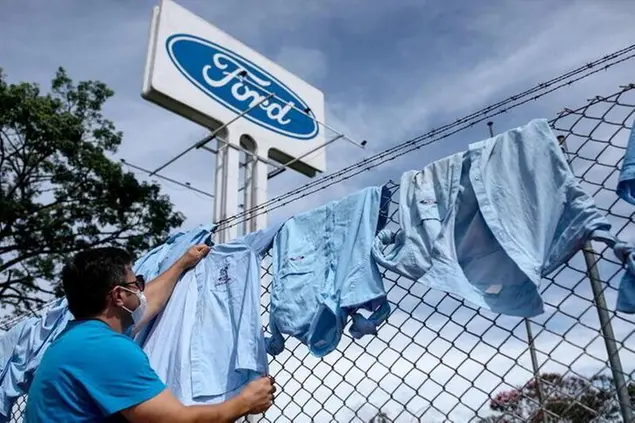PHOTO
WASHINGTON- New orders for U.S.-made capital goods rebounded more than expected in March, suggesting that business spending on equipment ended the first quarter with strong momentum, though part of the increase reflected higher prices.
Orders for non-defense capital goods excluding aircraft, a closely watched proxy for business spending plans, increased 1.0% last month, the Commerce Department said on Tuesday. These so-called core capital goods orders fell 0.3% in February.
Economists polled by Reuters had forecast core capital goods orders would rebound 0.5%. The data are not adjusted for inflation, which is soaring amid strained supply chains.
"The solid increase in core orders suggests that businesses remain in good shape, and are still looking to bulk up on machines and equipment to contribute to their bottom lines," said Jennifer Lee, a senior economist at BMO Capital Markets in Toronto.
Shipments of core capital goods rose 0.2% last month, matching the gain in February. Core capital goods shipments are used to calculate equipment spending in the gross domestic product measurement. Demand for goods remains strong even as spending is shifting back to services, keeping manufacturing expanding.
But the sector, which accounts for 12% of the economy, continues to battle supply bottlenecks, a situation that has been worsened by Russia's war against Ukraine, which has slowed the improvement in global supply chains.
Lockdowns in China to contain a resurgence in COVID-19 cases are also adding to the pain. Business spending on equipment rebounded in the fourth quarter, but appeared to have moderated in the January-March period. The government is due to publish its snapshot of first-quarter GDP on Thursday.
According to a Reuters survey of economists, GDP growth likely slowed to a 1.1% annualized rate last quarter from the fourth quarter's robust 6.9% pace.
Economists expect business spending to remain strong despite the Federal Reserve raising interest rates to fight inflation. The U.S. central bank increased its policy interest rate by 25 basis points last month. It is expected to hike rates by 50 basis points next week, and soon start trimming its asset holdings.
"While business equipment investment is usually one of the more rate-sensitive parts of the economy, the exceptionally tight labor market and elevated capacity utilization rates this early in the cycle means we expect investment growth will hold up quite well," said Michael Pearce, a senior U.S. economist at Capital Economics in New York.
In March, orders for durable goods, items ranging from toasters to aircraft that are meant to last three years or more, increased 0.8% after declining 1.7% in February.
They were boosted by strong increases in orders for electrical equipment, appliances and components, as well as computers and electronic products, machinery, primary metals and fabricated metal products.
Orders for transportation equipment advanced 0.2% after plunging 4.4% in February. Motor vehicle orders accelerated 5.0% after rising 0.3% in February.
Orders for the volatile civilian aircraft category dropped 9.9% after decreasing 27.3% in February. Boeing reported on its website that it had received only 53 aircraft orders last month, compared to 37 in February.
(Reporting by Lucia Mutikani Editing by Paul Simao)
